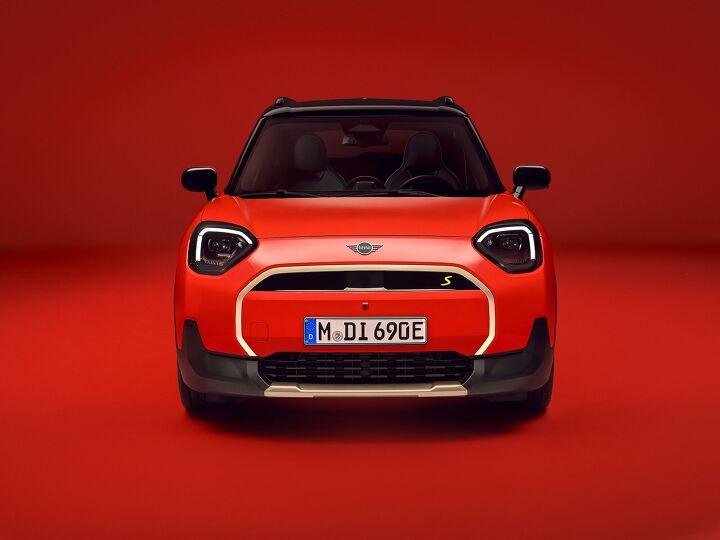
With the Mini Aceman going from cutesy concept to real car, some are wondering whether the model will be migrating from China to North America. Sized between the Cooper Electric Hardtop and Countryman, the Aceman could be a nice fit for urbanites interested in an all-electric runabout.
While marketed as a crossover, it’s really more of a boxy hatchback with some EV styling cues that immediately help identify it as a Mini product. It’s an attractive vehicle and boasts the brand’s new minimalist interior design. How well those in-cabin decisions translate for the driving experience is up to questioning. But they do give the interior a distinctive look and seem like the kind of thing that would play well with their clientele. Mini has used a lot of varying textures and splashes of color to make a fairly barren space fun to look at.

The car seems to be a scaled-up Cooper EV and will be utilizing the same powertrains. All entry-level Acemen (Aceman E) comes with a 40.7-kWh battery pack and a single electric motor producing 181 horsepower and 214 lb-ft of torque. However, there’s an available 54.2-kWh version available with 215 hp and 243 lb-ft for those interested in spending more to get the Aceman SE. Mini said they’d both be capable of hitting 62 mph in under 8 seconds, with the faster of the two managing the task in 7.1 seconds.
Mini has said there will be a JCW option available in the future. But it’s not clear if it’ll be a true performance model or part of the “JCW Line” that gives models performance looking visual enhancements without actually raising the mechanical bar. This is something a lot of automakers have been doing in recent years and it’s a curse on the industry. While offering fun appearance packages is a good thing, giving them performance-focused names is not.

Considering the battery options available, range might not be the best. Mini has estimated the base model offering 192 miles between charges while the models using the larger battery pack are supposed to be capable of 252 miles. However, those calculations were done on the European test cycle and it’s quite forgiving. We imagine the real-world range will be a little lower than advertised, as would any subsequent assessments conducted by U.S. regulatory groups.
All-wheel drive is standard and, since this is mini, you’ll be able to put an assortment of custom wheels in varying sizes. In fact, factory customization should be fairly robust in general. But this won’t change the basic functionality of the vehicle.

Cargo capacity will still be limited to 10.5 cubic feet (35 cubes if the rear seats are folded down) and seating will be limited to five. Though, at this size, four might be more realistic if it’s going to be a longer drive.
Assuming the vehicle makes it to our shores, it should sit somewhere between the electrified Cooper and Clubman. We’d guess a starting MSRP above $37,000 and below $42,000. That’s fairly steep for a vehicle of this size. But Mini would argue it’s a purveyor of premium small cars and its customers don’t seem to mind spending a little extra to gain access to their products.

That said, vehicles likewise trend smaller in other parts of the world than they do in North America and Mini already has a surplus of compact vehicles. The Aceman measures out to be 160-inches long, 69-inches wide, and 59-inches tall. That makes it about the size of a Hyundai Venue and that’s as small as most people seem willing to go with crossovers on our market.
Something tells me that we probably won’t see the Aceman on our shores. It’s size poses a minor issue, as does it being all-electric and produced exclusively in China. However, Mini seems interested in leaving a door open and has not committed itself one way or the other.

[Images: Mini]
Become a TTAC insider. Get the latest news, features, TTAC takes, and everything else that gets to the truth about cars first by subscribing to our newsletter.

